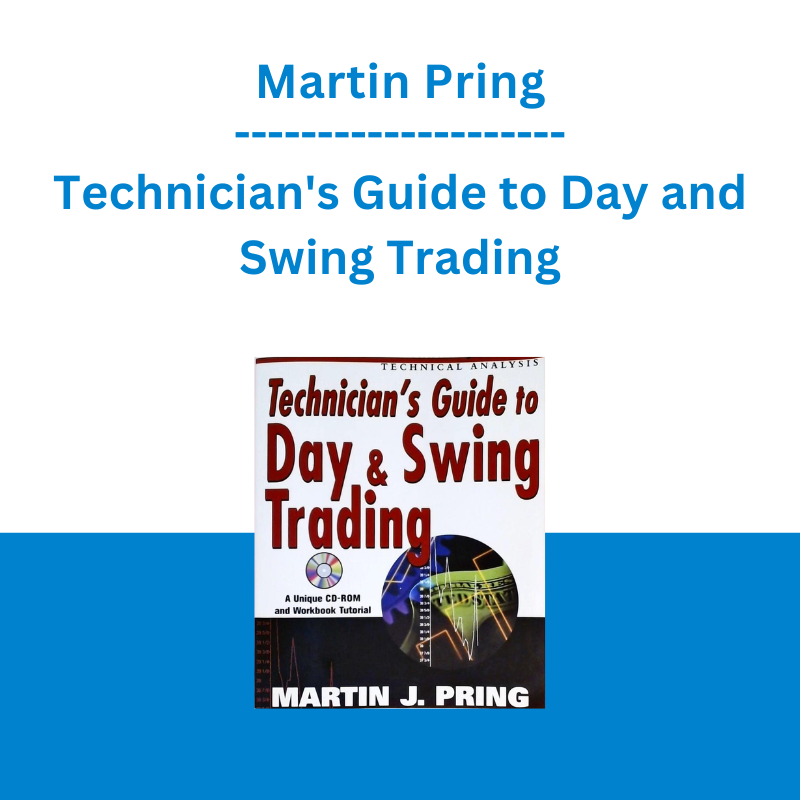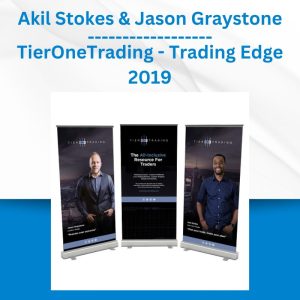*** Proof of Product ***
Exploring the Essential Features of “Martin Pring – Technician’s Guide to Day and Swing Trading”
Technician’s Guide to Day and Swing Trading
This 4-hour audio-visual CD-ROM course and 325-page book, intended for the beginning and intermediate trader, offers a complete guide on how technical analysis can be converted to short-term (30-minute to a tick) charts can be used for more profitable day trading.
Martin Pring’s latest addition to the Advanced Course, Technician’s Guide to Day and Swing and Trading, is a refreshing, informative journey into the chaotic world of day trading.
“I purchased Technician’s Guide to Day [and Swing] Trading a couple of months ago and consider it the best $70.00 I have spent in life!! I was a successful short-term stock trader before because of discipline and patience (school of hard knocks), but the 5 and 15 minute KST give such a solid basis for probable price direction it really is “icing on the cake”. I subsequently ordered Pring on Market Momentum and had to give up trying to highlight paragraphs because it is all worthy of the “yellow ink”!!” – K. Grubbs, Lexington, KY
“Martin Pring, the authority on quality education for investors, has done it again! His latest book, Technician’s Guide to Day Trading, is a masterpiece on intraday trading. Martin covers the basic trading principles of day trading, plus shares the key concepts and strategies used by professional day traders. Whether you consider yourself a novice or an expert, this book can help you gain a greater understanding of the markets. I highly recommend it.” – A. McNichol, President of EQUIS International – Creators of MetaStock Professional
- Technician’s Guide to Day and Swing Trading starts with an in-depth coverage of basic topics such as support and resistance, peak and trough analysis, price patterns, gaps and moving averages. It later moves on to cover less widely understood concepts such as one and two day price reversals, momentum, and the integration of momentum and trend analysis. Pring also demonstrates the ins and outs of Bollinger Bands and the Parabolic Indicator. A complete chapter is dedicated to street-smart tips used by professional day traders.
- Concepts such as how to use leading stocks to forecast Intraday activity, what to expect after the opening range, how to anticipate market moving events, and how and where to place stops, are the kind of subjects normally reserved for the pros. Pring has broken these down in easy to understand language.
- Pring’s law states that trading success is inversely related to emotional stimulation. The final lessons of this tutorial help traders better master their emotions by using down to earth practical marketplace examples.
- For the first time ever, this CD shows you how to adapt Pring’s popular KST Indicator to real-time data. These formulas are available to copy and paste into your MetaStock Professional charting software.
- Finally, Technician’s Guide to Day and Swing Trading comes complete with an interactive quiz, an excellent way to strengthen newly learned skills. Once you have taken the quiz, the program stores your results and you can easily follow your progress.
- An index enables you to quickly isolate any of the subject matter. A quick click on the topic of your choice and the lesson is immediately played.
- Technician’s Guide to Day and Swing Trading is the ideal resource to perfect your trading skills. Give yourself an edge in your success in the pursuit of more profits and sound sleep.
Complete CD Table of Contents – Approx. 4 hours running time
Chapter 1 – Introduction
Introduction to Day Trading
To Overnight or Not to Overnight?
Time Frames
Establishing a Trading Strategy
Risk Management
Using Money Management Techniques
Chapter 2 – Peak-and-Trough Analysis
Defining the Trend
Three Important Trends
Introduction to Peak and Trough Analysis
Learning the Half Signals
What Constitutes a Legitimate Peak or Trough?
Peak and Trough Summary
Marketplace Examples
The DowntrendContinues
Rallying Back
Chapter 3 – Support and Resistance
Introduction
Determining the Significance of Support/
Resistance Areas
Summary
Marketplace Examples I
Marketplace Examples II
Chapter 4 – Trendlines
The Basics
Trendlines Summary
Determining the Significance of a Trendline
MarketPlace Examples
Return Line Breakouts
Chapter 5 – Price Pattern Formations
Rectangles
Head and Shoulders
Head and Shoulders Failures
Triangles
Double Bottoms and Tops
Summary
Marketplace Examples I
Marketplace Examples II
Marketplace Examples III
Chapter 6 – One and Two Bar Patterns
Bar Pattern Introduction
Outside Bars
Inside Bars
Two Bar Reversals
Key Reversal Bar
Exhaustion
Pinocchio Bars
Marketplace Examples
Chapter 7 – The Significance of Gaps
Introduction
The Significance of Opening Gaps
Intra-day Opening Gaps
Chapter 8 – Moving Averages
The Basics
Optimizing
Moving Averages and Price Bars
Guerilla Warfare
Chapter 9 – Applying Oscillators to Intraday ChartsBasic Principles
Overbought/Oversold
Negative and Positive Divergences
Time Frames and Momentum Signals
Using Momentum and Trendlines
Chapter 10 – Integrating Oscillators with Moving Averages and the Parabolic Indicator
Introduction
The Price Oscillator
The Parabolic Indicator
Setting the Parabolic Parameters
The RSI
Chapter 11 – Day Trading with the KST
Gaining Perspective
Learning to Identify Dominant Intra-day Trends
The Concept Behind the KST
Interacting the Long- and Short-term KSTs
Anticipating Long-term KST Reversals
The KST Using Tick Data
Chapter 12 – Bollinger Bands
The Concept
Narrowing of the Bands
Penetration of the Bands
Reversal Formation Following Re-penetration of the Bands
Chapter 13 – Where and Where Not to Place Stops
Advantages and Disadvantages of Placing Stops
Judicious Placement of Stops
Use Extreme Bars to Place Stops
Chapter 14 – Five Street Smart Trading Tips
Go with the Leader
Using Brokers as a Leader
Using Merrill Lynch as a Leader
Trade Liquidity
Treatment of News
Anticipate a Catalyst
Using Intermarket Relationships as a Catalyst
Summary of Stock/Bond Relationship
Think in Terms of Probabilities
Chapter 15 – Seven Tips to Control Your Emotions
Don’t Trade at the Edge of the Pendulum
Pring’s Law
Only Trade with a Balanced Mindset
Patience and Discipline are Required for Successful Trading
Only Trade when You Feel Good and there is a Legitimate Opportunity
If you Get In for a Good Reason, Get Out if it is No Longer Valid
Don’t Penny Pinch
Trade Smaller Positions when Things Go Wrong
Not Sure? Don’t Trade
Take Time to Learn
APPENDIX – KST Formulas for MetaStock Pro
5-Minute Bar Short-term KST
5-Minute Bar Long-term KST
15-Minute Bar Short-term KST
15-Minute Bar Long-term KST
Short-term Tick KST
Please see the full list of alternative group-buy courses available here: https://lunacourse.com/shop/









